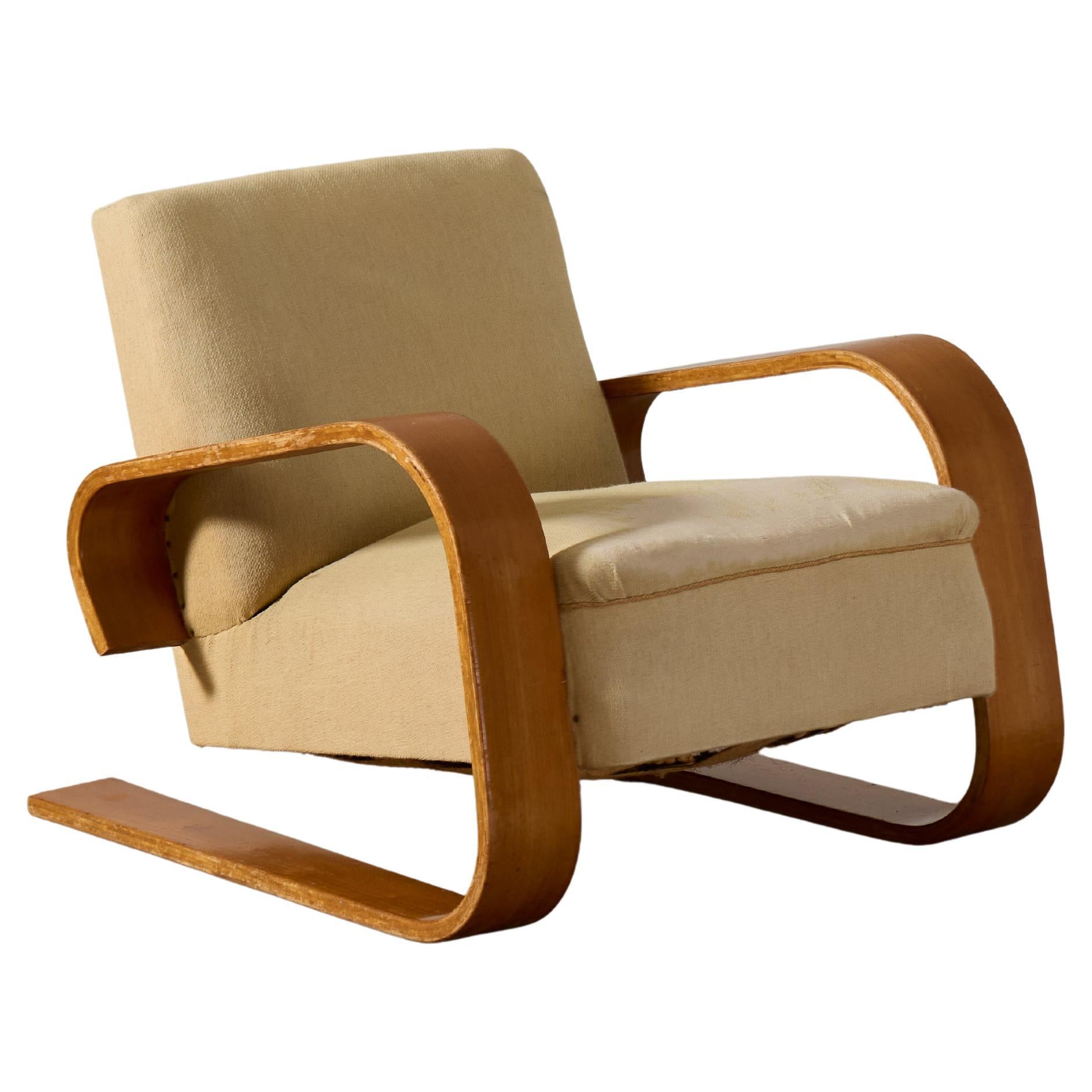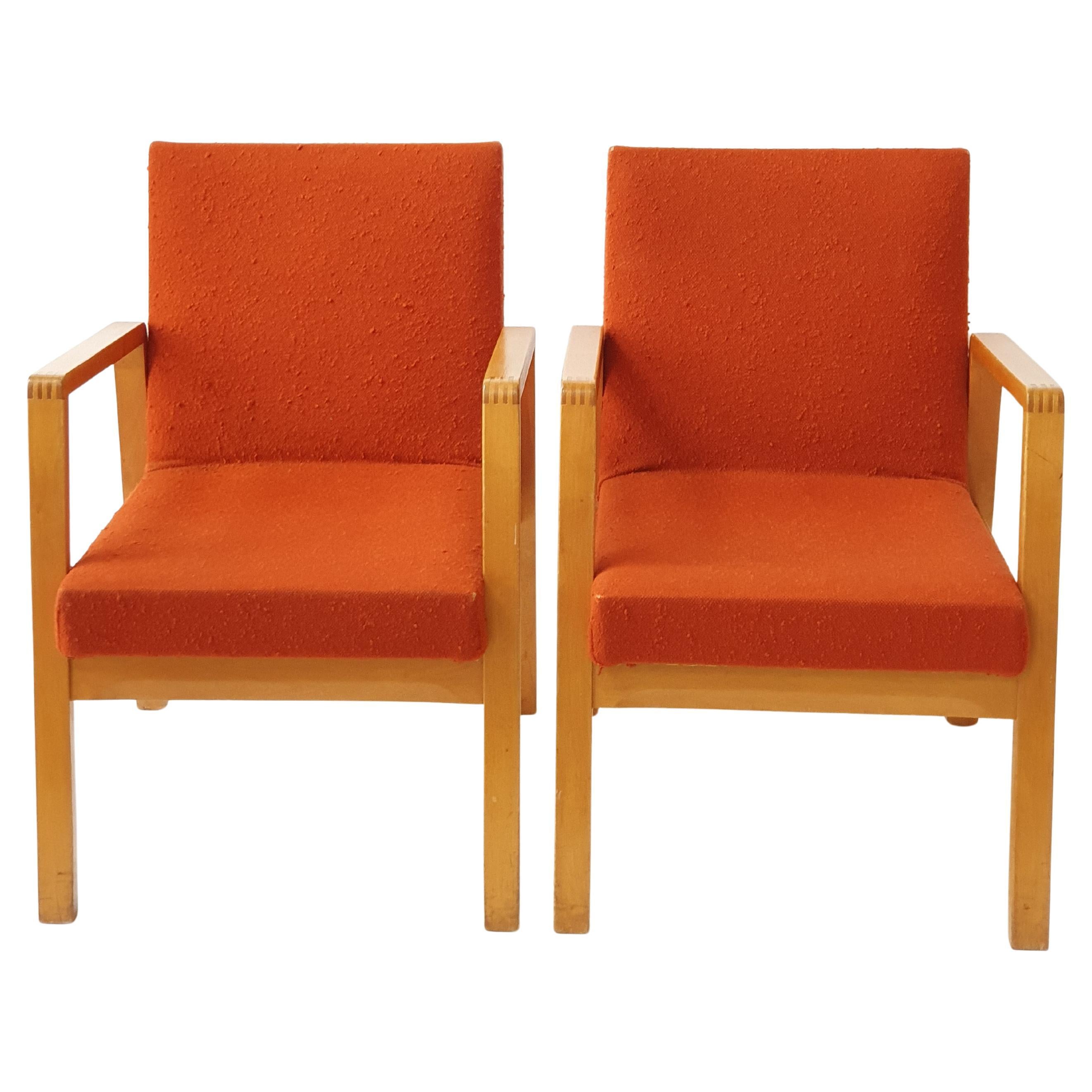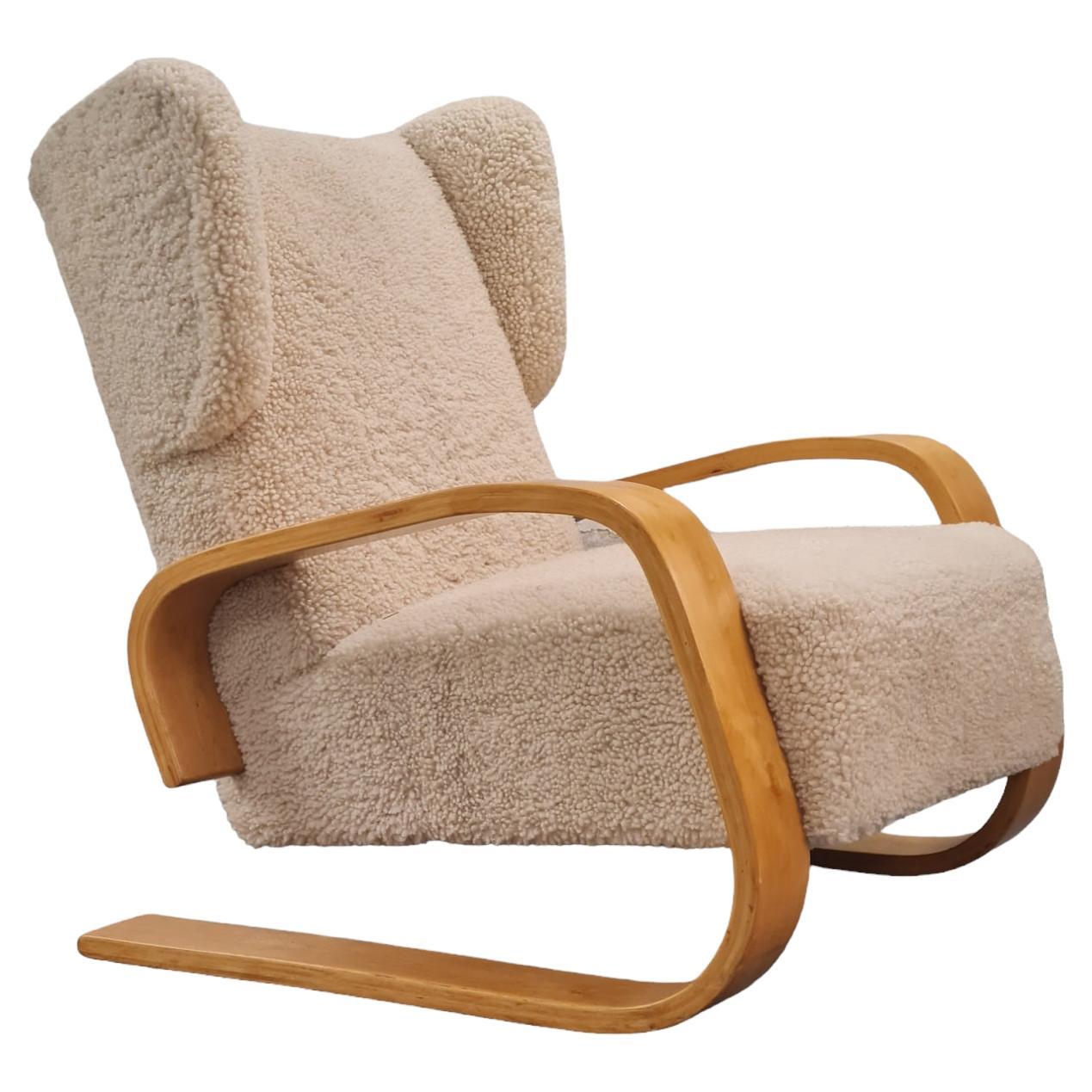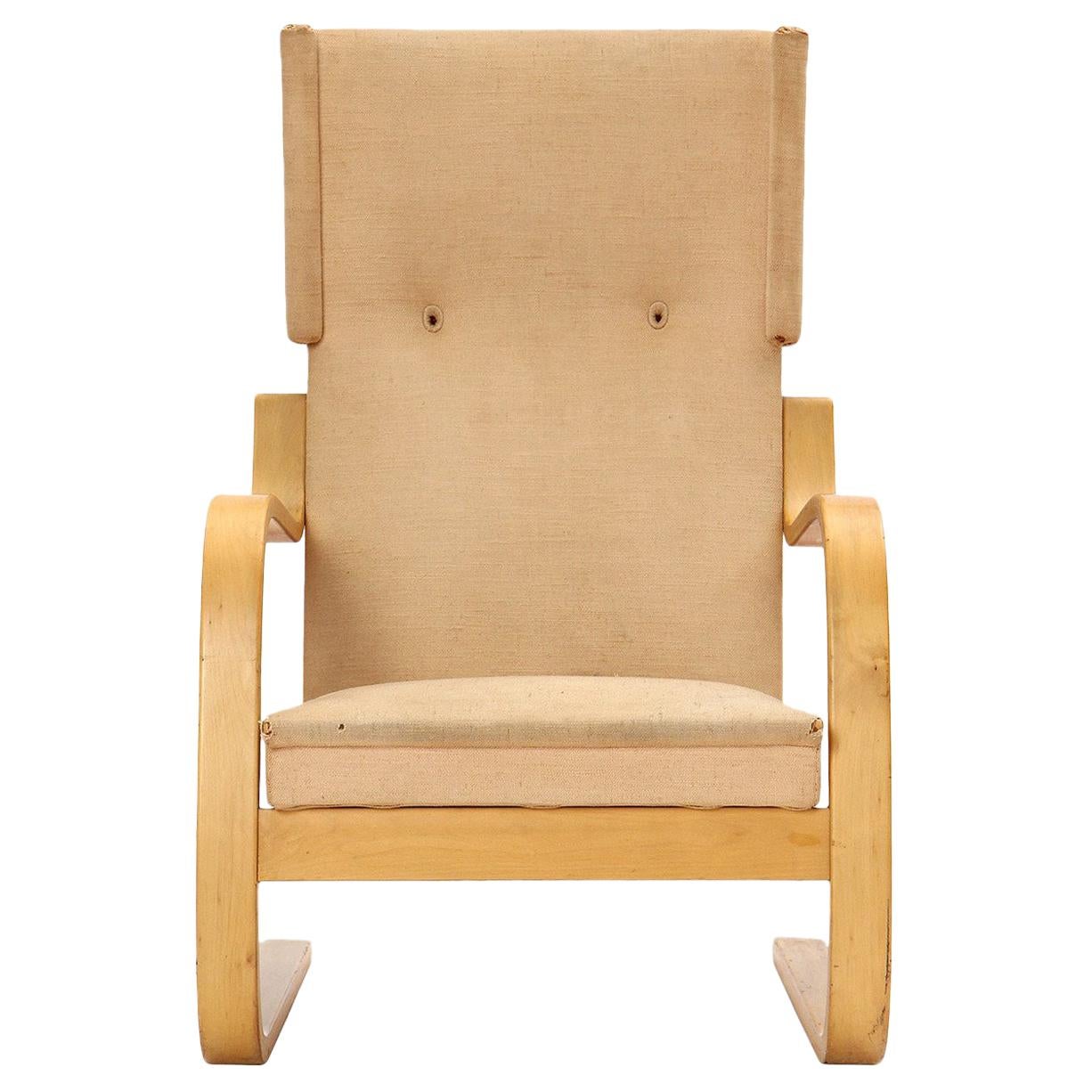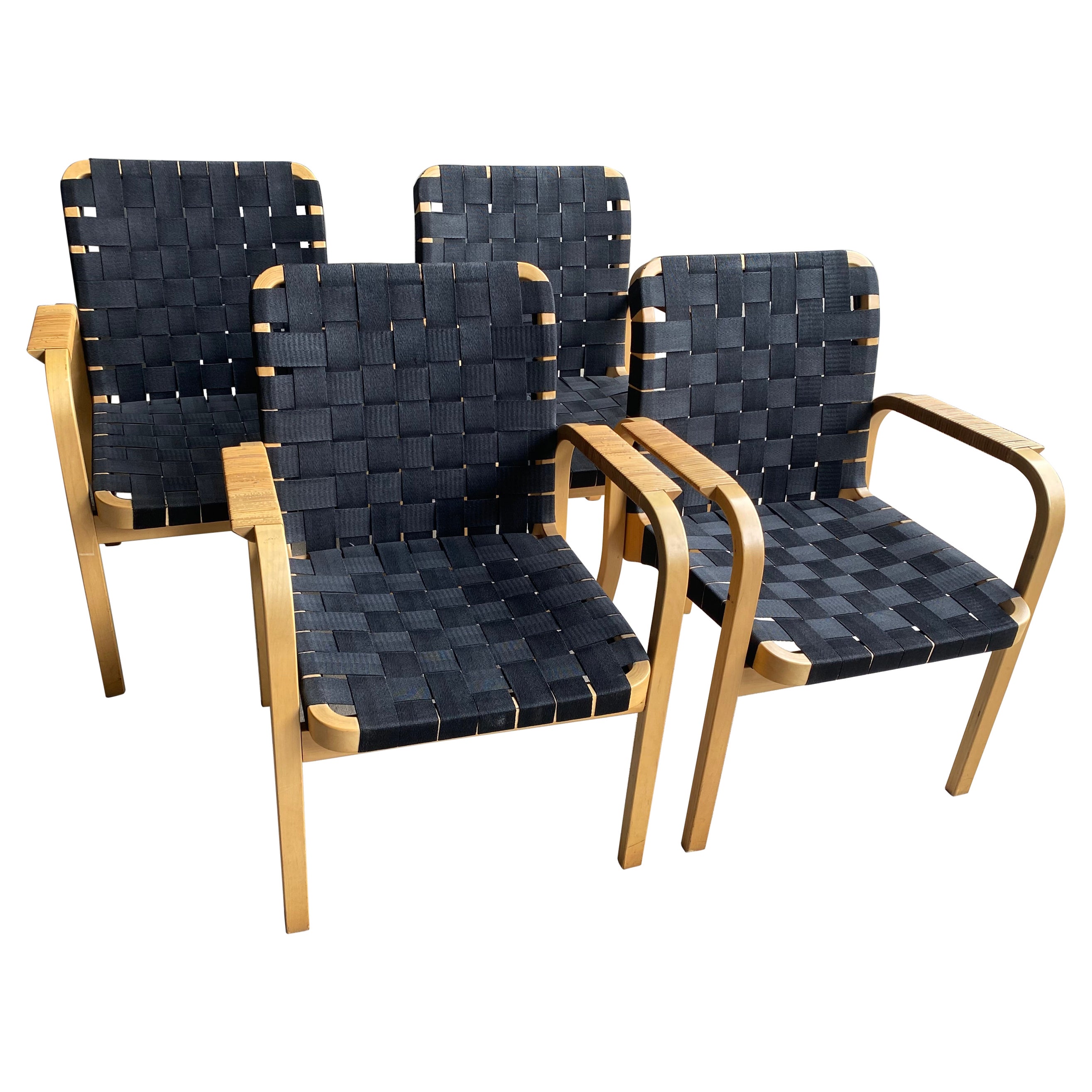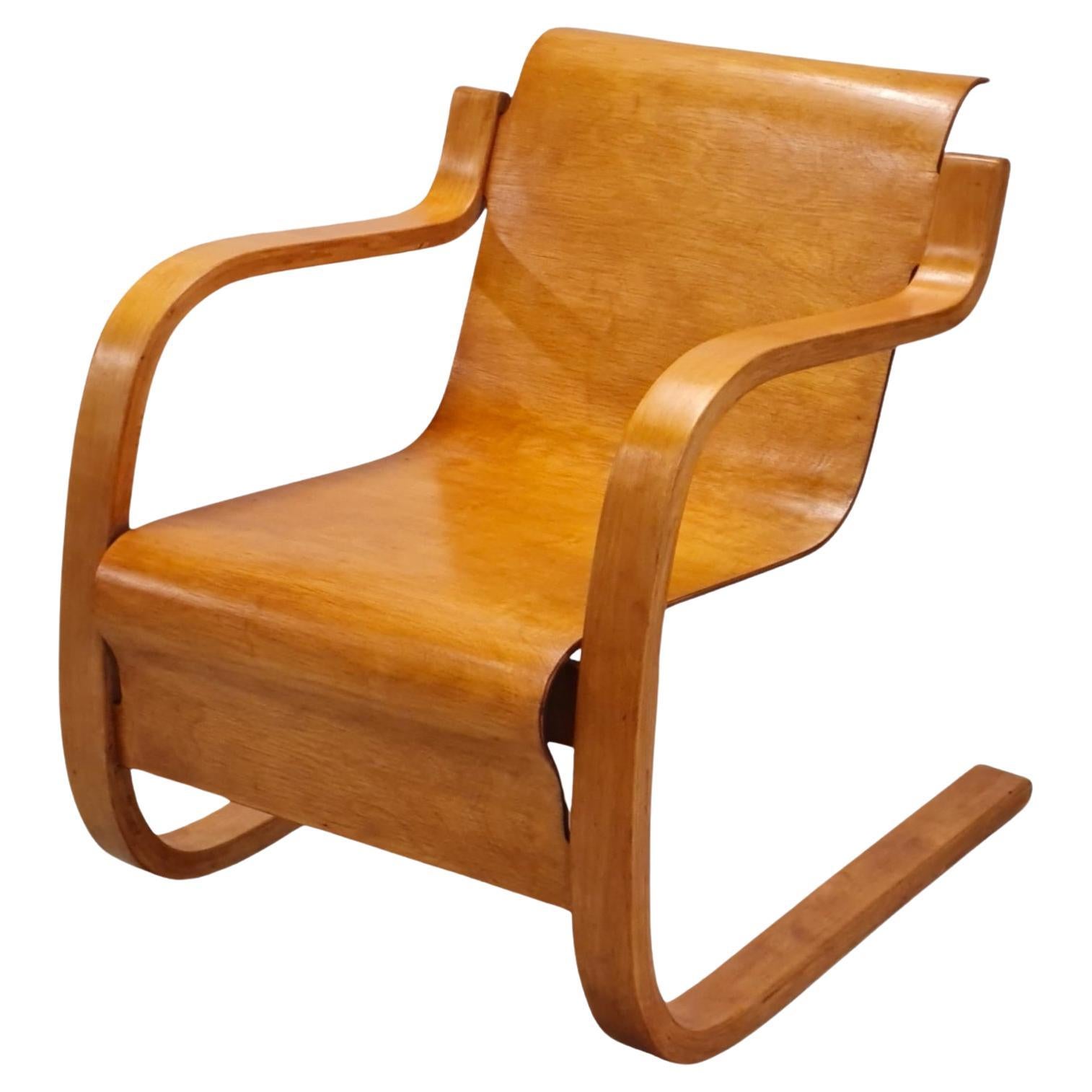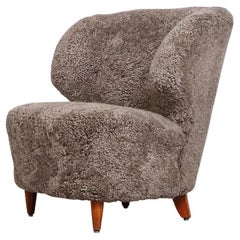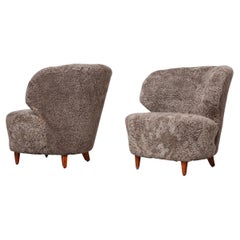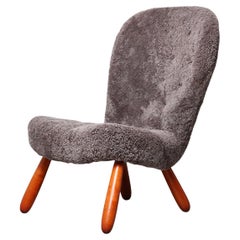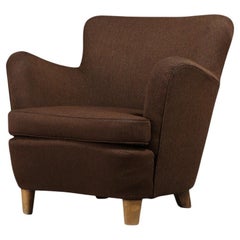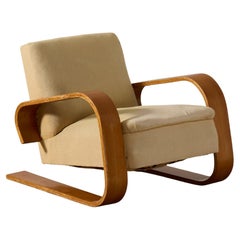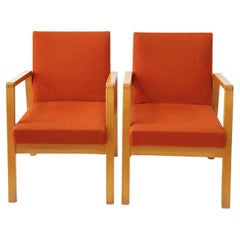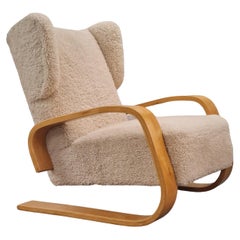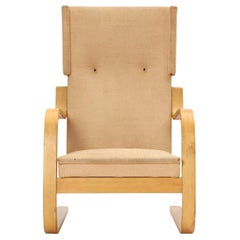Alvar Aalto ‘Tank’ Lounge Chair in Red Velvet, Finland 1940s
About the Item
- Creator:Alvar Aalto (Designer),Artek (Manufacturer)
- Design:
- Dimensions:Height: 29.14 in (74 cm)Width: 29.53 in (75 cm)Depth: 32.68 in (83 cm)Seat Height: 15.75 in (40 cm)
- Style:Scandinavian Modern (Of the Period)
- Materials and Techniques:
- Place of Origin:
- Period:
- Date of Manufacture:1940s
- Condition:Wear consistent with age and use.
- Seller Location:Prague, CZ
- Reference Number:Seller: 90161stDibs: LU6233242413842
Tank Armchair
In 1936, Finnish designer Alvar Aalto (1898–1976), a graduate of the Helsinki University of Technology who had just moved the practice he ran with his first wife, Aino, from the Finnish city of Turku to Helsinki, presented a new chair at the Milan Triennale. Compared to Aalto’s previous furniture designs, the Armchair 400, or Tank armchair, was robust, with a wide and sturdy shape that earned it its name.
Prior to this, Aalto had seen success in 1933 for his Stool 60, a simple wood design that remains one of the most celebrated seats in design history. Next to the Stool 60, the Tank armchair was, well, a tank.
But the cantilevered seat garnered widespread approval in Milan, even earning Aalto a prize from the fair. Like the Stool 60, though, the Tank armchair makes use of gracefully bent birchwood. Much of Aalto’s work involved native birch, which he referred to as a “form-inspiring, deeply human material.” This attitude speaks to the designer’s approach, which was always to integrate architecture and design both with its surroundings and the movements of its users.
With the Tank, Aalto created what he saw as the ideal chair: Its upholstered seat offers comfort, but the cantilevered form ensures it remains elegant, as do the sculptural, curving armrests, each cut from a single piece of birch. The shape also gives it flexibility, making it suitable for both leaning back and relaxing or sitting upright for conversation.
The continued popularity of the Tank armchair — and the increase in popularity in cantilevered seats in the years following its release — speaks to the importance of Aalto’s early experiments in bentwood, a material that would come to be a defining aspect of mid-century furniture design. Years later, for example, American designers Charles and Ray Eames would begin producing pieces in bent and molded plywood created with their famous homemade “Kazam! Machine.”
In 1939, upon seeing Aalto’s work for the Finnish Pavilion at the World’s Fair, Frank Lloyd Wright (who also had a certain love affair with wood, although the renowned architect’s species of choice was mahogany) reportedly called Aalto a “genius.”
The Tank armchair is produced by Artek, which the Aaltos helped cofound. It is available in a wide variety of upholstery and wood-stain options, including the eye-catching zebra pattern, an unexpected offering from a company whose palette tends to be more muted but a popular version of the chair since its early days.
Alvar Aalto
An architect and designer, Alvar Aalto deserves an immense share of the credit for bringing Scandinavian modernism and Nordic design to a prominent place in the global arena. In both his buildings and his vintage furniture — which ranges from chairs, stools, tables and lighting to table- and glassware — Aalto’s sensitivity to the natural world and to organic forms and materials tempered the hardness of rationalist design.
Relatively few Aalto buildings exist outside Finland. (Just four exist in the United States, and only one — the sinuous 1945 Baker House dormitory at M.I.T. — is easily visited.) International attention came to Aalto, whose surname translates to English as “wave,” primarily through his furnishings.
Instead of the tubular metal framing favored by the Bauhaus designers and Le Corbusier, Aalto insisted on wood. His aesthetic is best represented by the Paimio armchair, developed with his wife, Aino Aalto, in 1930 as part of the overall design of a Finnish tuberculosis sanatorium.
Comfortable, yet light enough to be easily moved by patients, the Paimio chair’s frame is composed of two laminated birch loops; the seat and back are formed from a single sheet of plywood that scrolls under the headrest and beneath the knees, creating a sort of pillow effect. Aalto’s use of plywood had an enormous influence on Charles and Ray Eames, Arne Jacobsen, Marcel Breuer and others who later came to the material.
Concerned with keeping up standards of quality in the production of his designs, Aalto formed the still-extant company Artek in 1935, along with Aino, whose glass designs were made by the firm. In the latter medium, in 1936 the Aaltos together created the iconic, undulating Savoy vase, so-called for the luxe Helsinki restaurant for which the piece was designed.
Artek also produced Aalto pendants and other lighting designs, many of which — such as the Angel’s Wing floor lamp and the Beehive pendant — incorporate a signature Aalto detail: shades made of concentric enameled-metal rings graduated down in diameter. The effect of the technique is essential Alvar Aalto: at once precise, simple, and somehow poetic.
Find a collection of vintage Alvar Aalto stools, vases, dining tables and other furniture on 1stDibs.
- ShippingRetrieving quote...Shipping from: Prague, Czech Republic
- Return Policy
More From This Seller
View AllVintage 1940s Finnish Scandinavian Modern Armchairs
Sheepskin, Wood
Vintage 1940s Finnish Scandinavian Modern Armchairs
Sheepskin, Wood
Vintage 1940s Danish Scandinavian Modern Armchairs
Sheepskin, Wood
Vintage 1940s Swedish Scandinavian Modern Armchairs
Fabric, Wood
Vintage 1940s Swedish Scandinavian Modern Armchairs
Fabric, Wood
Vintage 1940s Swedish Scandinavian Modern Armchairs
Iron
You May Also Like
Vintage 1940s Finnish Scandinavian Modern Armchairs
Birch
Vintage 1940s Finnish Scandinavian Modern Armchairs
Birch
Vintage 1940s Finnish Scandinavian Modern Lounge Chairs
Sheepskin, Birch
Vintage 1940s Finnish Scandinavian Modern Lounge Chairs
Upholstery, Birch
Vintage 1960s Finnish Scandinavian Modern Dining Room Chairs
Nylon, Beech
Vintage 1940s Finnish Scandinavian Modern Armchairs
Birch, Plywood
Recently Viewed
View AllRead More
The Very Modern Love Story of Mid-Century Design Duo Alvar and Aino Aalto
A power couple before the term existed, the influential pair made work that still resonates today.
What Makes Scandinavian Modernism and Nordic Design So Irresistible?
Andrew Duncanson, founder of the Stockholm- and London-based gallery Modernity, weighs in on the masters of mid-century furniture and decorative arts.
